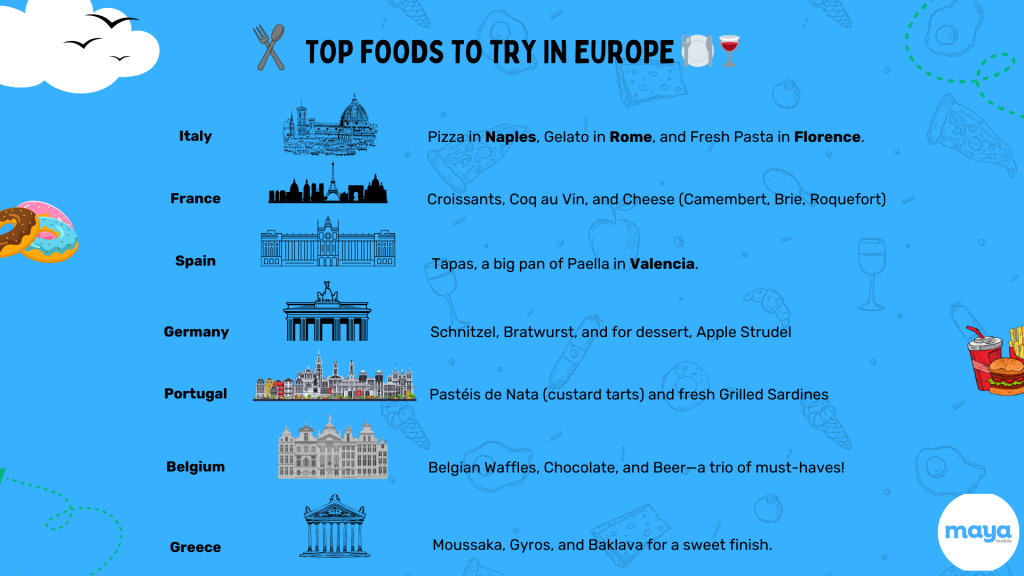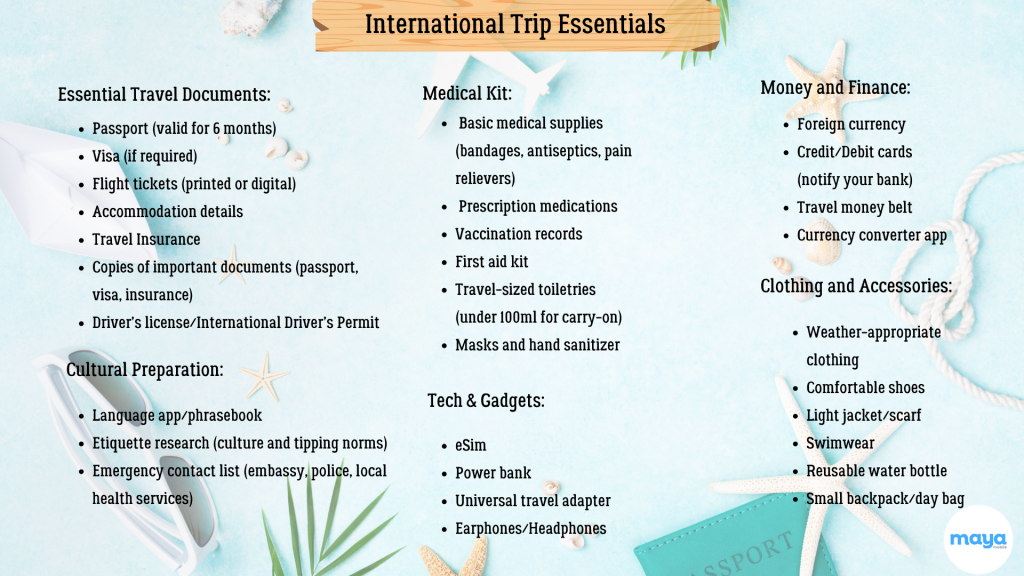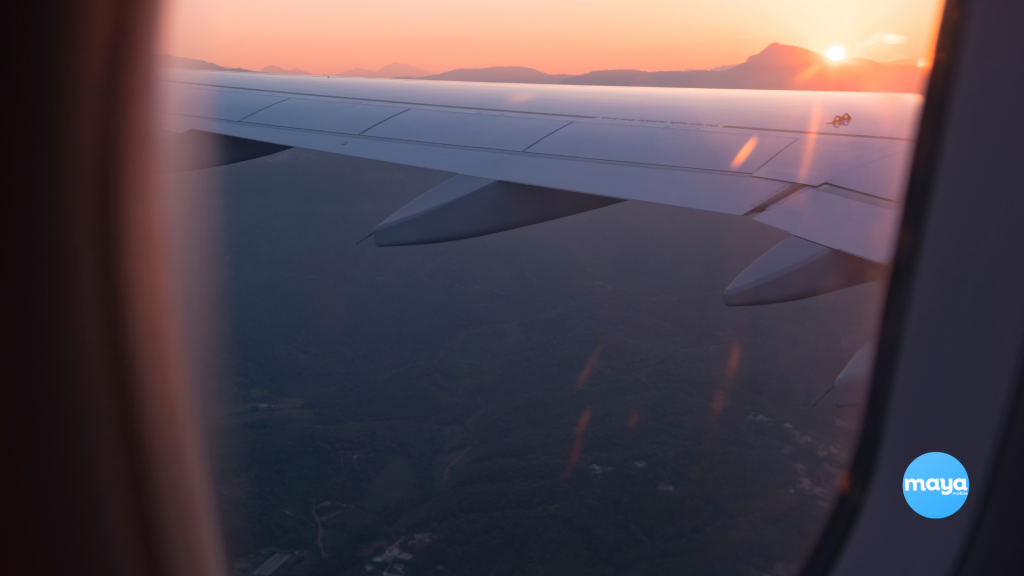Nothing beats the thrill of planning your first trip abroad, but the process can feel a bit overwhelming. We’ll walk you through everything you need to know to make the process smooth and stress-free. This guide covers all the basics, from passports to packing, so you’re well-prepared for your first international travel.
What makes this guide different? Along with the essentials, we’ll share practical tips, helpful travel hacks, and tools to make your trip planning easier and more enjoyable. Let’s get started!
Choose Your Destination
Picking your first international destination is more than just choosing a place on the map; it’s about finding a destination that aligns with your interests, lifestyle, and budget. Ask yourself: What kind of experiences do you want? Do you want to immerse yourself in history, adventure, nature, or a laid-back beach vibe?
Then, narrow down your options by focusing on what excites you.
For example, if you’re a foodie, you might want to visit places like Italy or Thailand, known for their incredible cuisine. If you’re into outdoor adventures, New Zealand or Costa Rica might be more your style. Remember, your trip should resonate with what you enjoy—whether it’s exploring ancient ruins, hiking through forests, or simply relaxing by the sea.
Destination Research
There are some really handy tools out there to help you choose the best destination. Platforms like Nomad List or Google Explore provide real-time data on safety, cost of living, and even weather patterns for cities around the world.
These tools can help you compare destinations based on your priorities—whether it’s affordability, safety, or internet speed (for those of us who might want to work remotely). You can even filter based on specific needs, like whether a place is family-friendly or suitable for solo travelers.
Instead of guessing, take advantage of these resources to find a destination that checks all your boxes.
Trending Destinations for First-Time Travelers
If you’re not sure where to start, here’s a list of trending destinations that are perfect for first-time travelers. These places are not only budget-friendly but also safe and packed with unique experiences:
- Portugal: Known for its stunning coastline, vibrant culture, and affordable prices, Portugal offers a mix of beaches, history, and great food.
- Vietnam: An excellent choice for those looking for cultural immersion without breaking the bank. Vietnam is famous for its street food, breathtaking landscapes, and welcoming locals.
- Georgia: This lesser-known gem in Eastern Europe is gaining popularity for its beautiful mountains, wine regions, and affordable travel options.
As you explore these destinations, one of the highlights will undoubtedly be the local cuisine. From fresh seafood on Portugal’s coast to the rich wines of Georgia, food is a key part of the experience.
Here are some top foods you simply must try in Europe on your travels:


These destinations offer a blend of adventure, safety, and affordability, making them ideal for your first trip abroad.
Timing Your Trip Perfectly
Timing is everything when it comes to travel. You can save a lot of money and avoid crowds by planning your trip during off-peak seasons. For example, visiting Europe in the spring or fall means lower prices and fewer tourists while still enjoying good weather.
Events and festivals also play a huge role in your travel experience. Attending a local festival can be an amazing way to dive into the culture of a destination. However, these events can also hike up prices for flights and accommodations.
Use travel heatmaps or tools like Google Flights to track the best times to visit based on historical trends and cost patterns. Planning around these can make your trip smoother and more affordable.
Plan Your Budget
With your destination set, it’s time to talk about budgeting. This is a crucial step to make sure you’re fully prepared and won’t run into any surprises.
The Ultimate Budget Blueprint
When it comes to travel budgeting, it’s crucial to account for everything: flights, accommodations, meals, excursions, visas, insurance, and even those souvenirs you’ll want to bring back. It’s also smart to have an emergency fund set aside in case something unexpected happens.
Start by estimating the big expenses, like your flight and accommodations. Then, think about daily costs like meals and transportation. Finally, add a buffer for things like entrance fees to attractions, tips, or any unexpected purchases. Once you’ve got a rough idea, you’ll know if you need to adjust your destination or travel dates to stay within your budget.
Budgeting Tools to Simplify the Process
Luckily, some great apps make budgeting easier. TravelSpend and Splitwise are perfect for tracking your travel expenses in real-time. TravelSpend lets you categorize your spending and even convert currencies if you’re hopping between countries. Splitwise is particularly useful if you’re traveling with others and need to divide costs like meals or accommodations.
For flights, tools like Hopper help you find the best deals by predicting when flight prices will drop. Just set up a watch on your destination, and the app will notify you when it’s time to book. This can save you some serious cash on airfare.
Smart Currency Management
Managing your money abroad can get tricky, especially with currency exchange rates. Using a multi-currency card like Revolut or Wise makes spending in different countries easier and helps you avoid those hefty foreign transaction fees.
It’s also a good idea to withdraw a little local currency before you leave, just to cover small expenses when you arrive. When you need more cash, avoid using airport ATMs, as they tend to charge higher fees. Instead, use ATMs from major banks in your destination, or even better, get a card that reimburses ATM fees worldwide.
This way, you’ll be financially prepared for your trip, leaving you to enjoy the experience without worrying about overspending!
Book Your Flights and Stays
Now that you have your budget in place, it’s time to lock down the two most important parts of your trip: flights and accommodations. These are often the biggest expenses, but with the right approach, you can save money and find options that fit your needs perfectly.
Flight Booking Secrets
When it comes to booking flights, there’s more to it than just picking the cheapest option. Use flight comparison tools like Skyscanner or Google Flights to monitor prices and track trends. These tools let you see price drops so you can book at the right time.
Keep an eye out for error fares using sites like Secret Flying, where you might snag some unbelievable deals due to pricing mistakes by airlines. Flexibility with your dates and airports can also lead to savings.
Accommodation Options for Every Traveler
Your accommodation should match your travel style and budget. Whether you prefer the convenience of a hotel, the homey feel of an Airbnb, or the social atmosphere of a hostel, there’s something out there for everyone.
For those looking to save even more, consider alternatives like Couchsurfing for a free place to stay or Workaway if you’re interested in working in exchange for room and board. Research your options well in advance to find the best fit for your trip.
Bonus Tip – Sustainable Travel
If you’re looking to reduce your travel footprint, consider staying at eco-friendly accommodations. Many hotels and Airbnbs now offer green options, including energy-saving practices and locally sourced products.
When booking flights, some airlines offer carbon offsets to reduce the environmental impact of your flight. Additionally, try to support small, local businesses to help the communities you visit.
By using the right tools and strategies, you can book affordable flights and accommodations that fit your needs and help make your trip more enjoyable.
Travel Insurance – Don’t Leave Without It
Booking your flights and accommodations is important, but don’t forget to protect your trip with travel insurance. It’s essential for covering unexpected events like flight cancellations, health emergencies, or lost baggage. Compare plans from top providers to find the right coverage for your needs.
Did you know some credit cards offer travel insurance as a perk? Check your card benefits before purchasing a separate plan—you might already have the necessary coverage.
Get Your Essentials and Start Packing


With your flights, accommodations, and insurance sorted, the next step is getting everything ready to go. Packing efficiently can make a big difference in your travel experience. Let’s make sure you’ve got everything you need for a smooth trip.
The Essential Packing Checklist
Packing smart starts with the basics. You’ll need versatile clothing that works for the weather at your destination, comfortable shoes, and a few key travel gadgets. Don’t forget travel adapters, portable chargers, and noise-canceling headphones to stay connected and comfortable during long flights or layovers. These small items can make a huge difference when you’re on the go.
Minimalism Meets Preparedness
As for packing, less is more. Using techniques like the KonMari method can help you pack only what you really need. Invest in packing cubes to keep everything organized and maximize your suitcase space. Roll your clothes to save room and reduce wrinkles. This way, you’ll stay organized and have easy access to your essentials without overpacking.
Tech Gear for the Modern Traveler
Today’s traveler needs more than just clothes and toiletries. An eSIM allows you to stay connected globally without the hassle of switching physical SIM cards or worrying about excessive roaming charges. It’s a convenient, cost-effective way to ensure you’re always online.
For added connectivity, consider bringing a pocket Wi-Fi device. If you’re heading off the grid or have long travel days without access to outlets, a portable solar charger is also a smart addition to your packing list.
Ready for Your First Trip Abroad?
With everything planned, you’re almost set to go! Don’t forget to stay connected effortlessly with Maya Mobile. Their eSIM makes it easy to stay online without the hassle of switching SIM cards or dealing with roaming charges.
The Next Step: Pack your bags, gather your essentials, and remember – the world is waiting for you! It’s time to take that first step toward your next great adventure.
Related Reads
FAQs
1. How do I find affordable flights?
- Use flight comparison websites like Google Flights, Skyscanner, and Momondo.
- Set fare alerts for price drops.
- Be flexible with travel dates and consider nearby airports.
- Book flights 2-3 months in advance for the best prices.
2. What’s the best way to handle currency exchange?
- Use debit/credit cards abroad for better exchange rates.
- Withdraw local currency from ATMs at your destination.
- Exchange a small amount of cash before departure for emergencies.
- Avoid airport exchange kiosks due to poor rates.
3. How much money should I budget for my first international trip?
- Low-budget travelers: $30-50/day in cheaper regions.
- Mid-range travelers: $50-150/day in pricier regions.
- Budget for major expenses like flights, accommodation, food, and activities.
- Add a buffer for emergencies.
4. How do I pack efficiently for international travel?
- Use a carry-on if possible to avoid checked baggage.
- Pack versatile clothing, roll clothes, and use packing cubes.
- Bring travel-sized toiletries, and check the weather and local customs.
- Don’t forget your passport, travel insurance, and electronics.
5. How can I ensure my safety while traveling abroad?
- Check travel advisories for your destination.
- Keep documents and money secure in a money belt.
- Avoid standing out as a tourist.
- Use secure Wi-Fi or a VPN, and trust your instincts.
6. What should I do if I lose my passport or other important documents while traveling?
- Report it to your embassy/consulate immediately.
- File a police report if required.
- Carry photocopies of documents.
- Obtain a temporary passport from the embassy.
7. Where should I plan my first international trip?
- Choose easy destinations: Canada, Ireland, New Zealand, U.K.
- Nearby regions: Mexico, Costa Rica, and neighboring European countries.
- Consider interests (beach, city, history, etc.).
- Choose safe and tourist-friendly destinations.
8. Which country is best for a 7-day trip?
- Japan: Tokyo, Kyoto, and hot springs.
- Italy: Rome, Florence, Venice.
- Iceland: Ring Road, waterfalls, hot springs.
- Thailand: Bangkok, Ayutthaya, Phuket/Krabi.
- Portugal: Lisbon, Porto, Algarve.




